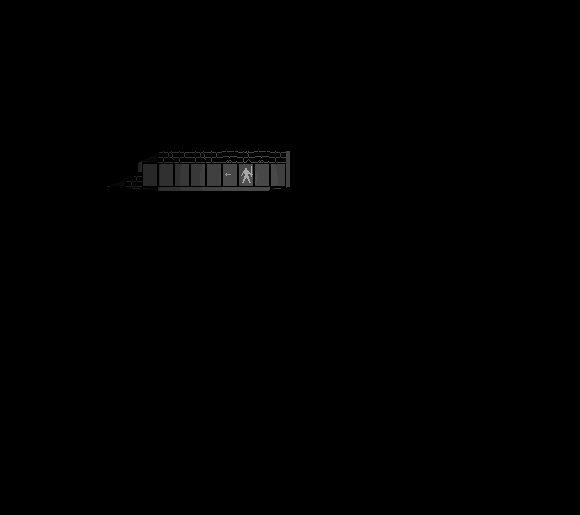|
I am ludum daring! ...Or was, I think I'm finished for now  You can play the game here: http://ludumdare.com/compo/ludum-dare-37/?action=preview&uid=5503
|
|
|
|

|
| # ? Jun 3, 2024 14:36 |
|
Lowen SoDium posted:Is that still a thing? I haven't seen it in a long time. I got it 
|
|
|
|
j.peeba posted:I am ludum daring! (also, your jaunty little pickle butt person is fantastic)
|
|
|
 Thanks to some new debug tools I wrote this week, I don't have to close the game to set up a full party for screenshots and gifs. Look at all those stats!
|
|
|
|
|
Shalinor posted:What engine is that? Everything is lit to be nice and soft, it's really pleasant. Is that UE4, or maybe Unity with their post-processing mega-stack? It's just regular ol' unity with default materials. The only post processing fx are standard asset ssao and fog. Nothing special really 
|
|
|
|
j.peeba posted:It's just regular ol' unity with default materials. The only post processing fx are standard asset ssao and fog. Nothing special really
|
|
|
|
Rutibex posted:Cross posting from the Rogue-like thread, because they told me to get lost while the premise for your game is interesting, it is not like rogue; which is the primary characterization of roguelikes
|
|
|
|
leper khan posted:while the premise for your game is interesting, it is not like rogue; which is the primary characterization of roguelikes  It has rogue-like elements!
|
|
|
|
Apply http://bp.io/howroguelike/
|
|
|
|
I got Rogue-like-like. I am comfortable with that.
|
|
|
|
Rutibex posted:I got Rogue-like-like. I am comfortable with that.  Where you get into the "come on, really?" territory is where you start dropping perma-death and other core features too. Some people use rogue-lite at this point just to indicate procedurally-generated levels, which is a bit... huh.
|
|
|
|
Here's my two cents about roguelikes that nobody asked for! Procedural content should be considered a supplement to (not a substitute for) good design. Players vary in how much they like having the dice rolled for their success, but the reception for procedure-heavy stuff is always based on the design choices they supplement rather than the level by which the game world is randomly assembled by said procedures. Procedural generation as a CS thing though, is extremely interesting. Handmade Net's early game engine episodes talks about interesting uses for it like element combinatorics (i.e., traits and temperaments the game might assign to a given enemy creature). There's a place for something like procedurally assigned AI traits I think, which could appear to smarten up strategy or squad shooter opponents by giving individual actors varying approaches to the same problem (MeatMan shooting at them from behind a chest-high wall with a hitscan weapon) edit: IMO, "Roguelike" has become almost as useless of a buzzword or descriptor as "RPG". All it does now is piss purists off if you use it and doesn't say anything defining about your game besides "something in it is random". Noyemi K fucked around with this message at 02:33 on Dec 12, 2016 |
|
|
|
|
Shalinor posted:Most modern roguelikes are roguelikelikes. Most action rogue-lites are even less than that. You can count the number of modern "true" roguelikes on, probably, one hand. Market-wise, you can still probably call your thing a roguelike, you'll just catch flack from the ASCII purists. Honestly it's more of a Euro board game as far as design goes. But I don't know how many people even know what that is 
|
|
|
|
Rutibex posted:I got Rogue-like-like. I am comfortable with that. I really don't see how your thing can be a roguelikelike by that site, unless I am majorly misunderstanding.
|
|
|
|
I haven't even looked at Unity in ages but I finally have some free time and started working on a game that currently involves bouncing enemies off of walls.  Also, I must say that getting over my anal desire to personally code everything has made actually making things much easier.
|
|
|
|
Speaking of Roguelikes, I'm cross-posting progress on mine from the Roguelike thread. Finally replaced my lighting system with one that works with occluding objects.
|
|
|
|
Fangz posted:I really don't see how your thing can be a roguelikelike by that site, unless I am majorly misunderstanding. Haven't played their game yet but just going off the post could be Most Events Are Narrated/Keyboard Only/Random Environments/Permadeath/Turn-based/Tactical/Player Attributes are Shown
|
|
|
|
Now that my social system is approaching finished I've been playtesting it a lot, and I'm really conflicted about how large I should make the NPC pool. Limiting it to 20-30 people is the best option by far, since that lets the player actually remember and keep track of everyone, and keeping track of such a small pool makes it easy to read narrative into it and emotionally engage with randomly generated guys over time, which in turn makes it suckier when they up and kill someone or get killed. However, going with a pool that small comes with some serious drawbacks- I've found that the sweet spot for investigation complexity is around 3-6 characters (vic, 1-3 witnesses, 1-3 suspects), and with a pool of 30 NPCs I can only solve five crimes at most before the same people start getting involved in multiple crimes, and it quickly becomes absurd; within an hour you can end up with single NPCs who've witnessed ten killings, been implicated as an accessory to armed robbery, and been mugged by several different guys. A small amount of interrelation is great for helping the player to map their own narratives onto RNG behavior, but 30 people provides way too much interconnection, and growing that pool to even 50 NPCs makes it considerably harder to remember and get involved with the activities of any one guy. It also results in a heck of a lot of turnover, to the point that every 10-15 cases the entire character pool will be killed, arrested, or flee the city. The obvious way to solve this seems to be to divide NPCs into 20-30 Main characters, who you get to know, and hundreds of junk Side characters, who are randomly generated at crime time to act as witnesses, bystanders, and friends of the Main characters. That immediately produces some weirdness, though, since the player is going to quickly pick up on the fact that he should be focusing on main characters who come up in each case, and treating the side characters like clue vending machines. It also fails to solve the issue of character attrition (through getting killed/arrested) unless I let side characters be victims and perps, and if I do that I've suddenly blurred the lines between main and side character to such a degree that it'll probably be a more coherent experience to just create a pool of 100-200 guys to begin with. So am I missing an obvious solution here? "Put 20 guys in a room and make the player's actions set them bouncing off each other like pinballs" is such an obviously fun hook that I really don't want to lose it, but I can't see a quick way out of the fact that the same arrests and deaths which make your connection to NPCs meaningful will decimate their numbers.
|
|
|
|
Omi no Kami posted:Now that my social system is approaching finished I've been playtesting it a lot, and I'm really conflicted about how large I should make the NPC pool. Limiting it to 20-30 people is the best option by far, since that lets the player actually remember and keep track of everyone, and keeping track of such a small pool makes it easy to read narrative into it and emotionally engage with randomly generated guys over time, which in turn makes it suckier when they up and kill someone or get killed. take a look at how phoenix wright handles things? obviously they're not procedural, but iirc they have a formula of sorts for connecting the cases together (been a while since i played one)
|
|
|
|
leper khan posted:take a look at how phoenix wright handles things? Phoenix Wright is pretty awesome, but they also have the advantage of being written by a human; I'm working on a system that generates procedural mysteries, hence trying to balance the pool of participants. The actual core crimes are pretty simple, and a lot of the atmosphere relies on the player getting familiar with the NPCs in the neighborhood, and enriching the investigation with their own past experiences (e.g. "Huh, a guy who died of a knife wound; better talk to Stabby the Murderin' Hobo first"). It's basically shadow of mordor with detectives when you get down to it... I think a lot of the challenge of balancing it comes from the fact that violence was your main tool to interact with NPCs in Mordor, and the fact that you were trying to kill them meant that chewing through dozens of orc officers wasn't actually a problem. My target experience is less of a revolving door, and more of a large cast that gradually builds through cases, and occasionally shrinks through arrests/murders.
|
|
|
|
Omi no Kami posted:Now that my social system is approaching finished I've been playtesting it a lot, and I'm really conflicted about how large I should make the NPC pool. Limiting it to 20-30 people is the best option by far, since that lets the player actually remember and keep track of everyone, and keeping track of such a small pool makes it easy to read narrative into it and emotionally engage with randomly generated guys over time, which in turn makes it suckier when they up and kill someone or get killed. Go with more people, I think, though perhaps keep an option for CHAOS MODE
|
|
|
|
In Unity if I have a Transform that I want to point towards an object I can just use Transform.LookAt(targetWorldSpacePosition). This seems to ignore all parent transforms and their rotations. How can I get the rotation of the transform as if I used .LookAt() on it without actually acting on the transform? I need to keep the transform in place and Slerp to this new position so I can't change it. Uhh Nope fucked around with this message at 17:24 on Dec 12, 2016 |
|
|
|
Omi no Kami posted:Now that my social system is approaching finished I've been playtesting it a lot, and I'm really conflicted about how large I should make the NPC pool. Limiting it to 20-30 people is the best option by far, since that lets the player actually remember and keep track of everyone, and keeping track of such a small pool makes it easy to read narrative into it and emotionally engage with randomly generated guys over time, which in turn makes it suckier when they up and kill someone or get killed. Introduce more characters over time or phase out (or weight lower) characters who've been too involved? Could even precompute all the connections but then only ever have twenty or thirty relevant and available. Maybe have a guy being phased out get a little epilogue: he thanks you for help, he moves out of town, goes on vacation, goes to jail, runs away, etc.
|
|
|
|
You could also go the other way and intentionally make it a bit of a farce that the same characters are always involved in crimes. Every time one of them gets "killed", a suspiciously-similar character (same personality, same look, except they have a fake moustache and their name is one letter different) shows up. ...but I suspect that's not really the tone you're going for.  My own question: I'm working on a real-time-with-pause game in Unity. During the pauses the player will be choosing what to do (it's an RPG). Am I correct in that the way to do this is to have some "paused" boolean somewhere (or equivalently some combination of "time is passing" and "this entity is currently receiving input" state fields), that all of my scripts' Update functions refer to? The way I'm used to thinking about this is to have different "layers" of UI, with only the topmost layer receiving user input (and with layers rendering back-to-front), but I don't really see how to translate that into Unity's system. Scenes don't really usefully correspond to menus as far as I can tell, for example, and as far as I'm aware it's not possible to composite scenes together.
|
|
|
|
I think there's something to be said for how tabletop rpgs handle it. You have specific named characters that remain consistent. As a list lets say: the DA, the police chief, the 3 competing mob bosses, the PC's cousin that's on the wrong side of the law, the stoolie you can always count on, the bar owner who always makes sure you get home when you drink yourself under the table, etc. Then you have your randomly generated crimes somehow relate to one or more of the consistent main cast. (the crime was part of the mob war or the crime took place near the bar and the vic would be recognized by the bartender) That way you've got a set of names and faces you can always count on and remember, and not have to worry that you've killed off everyone your player knows and loves. Baron Snow fucked around with this message at 17:39 on Dec 12, 2016 |
|
|
|
TooMuchAbstraction posted:You could also go the other way and intentionally make it a bit of a farce that the same characters are always involved in crimes. Every time one of them gets "killed", a suspiciously-similar character (same personality, same look, except they have a fake moustache and their name is one letter different) shows up. i'd probably have a layeredupdate thing that calls doupdate on a stack of objects instead of a global bool and then make sure things register/deregister from it  basically the whole song and dance for initialization/update order but extend it to allow consuming updates
|
|
|
|
Omi no Kami posted:I've found that the sweet spot for investigation complexity is around 3-6 characters (vic, 1-3 witnesses, 1-3 suspects) Are you sure that this holds up even after you have 'gotten to know' some of the people involved? I imagine the following scenario: You are investigating a murder, and Nicky Belladucci was spotted near the scene. You bring him in for questioning as a person of interest, and he keeps his mouth shut, but you're sure he knows something. You follow him for a couple of days, and discover that he's sleeping with Don Valetta's wife, and you snap some pictures. You know if you send the pictures to the Don, Nicky's a dead man, so you use the pictures to blackmail Nicky into revealing what he knows about the murder, which leads you to a dumped car, which has the victims blood, the murder weapon, and a ton of fingerprints, leading to the resolution of the case. A great interaction with an NPC, Nicky, who you will never forget, coupled with some fun gameplay of tailing him and getting the pictures. Several cases later, Nicky shows up again as a person of interest. This time there's no gameplay, because you still have the pictures from before, so he just immediately tells you what he knows. This time, though, the case is more complicated. Nicky doesn't send you straight to a goldmine, he just gives you the first of several leads you need to solve the case. You still have to investigate something new, and you are able to solve a bigger case because of your earlier activity and interactions with Nicky, without it turning boring because of its size. It makes sense to me that a specific case is only fun enough for 5-ish steps to solve, which means that a size 20-30 cast is too small, but it seems like a 10- or even 15-step case could still be fun if all but 5-ish of those steps were over more or less immediately, because they involved people or places with which you were already familiar. This would allow for a much larger cast that would expand organically over time, allowing the player to learn about new characters slowly, without being overwhelmed. Start with a cast of 10 people for the first case, and then add 4 or 5 more cast members for each subsequent case. That will give you room for breakage, new faces on a regular basis, and recurring characters you get to know over time.
|
|
|
|
Uhh Nope posted:In Unity if I have a Transform that I want to point towards an object I can just use Transform.LookAt(targetWorldSpacePosition). This seems to ignore all parent transforms and their rotations.
|
|
|
|
Star Warrior X posted:Are you sure that this holds up even after you have 'gotten to know' some of the people involved? I imagine the following scenario: That's a really good point, and I see where you're going with your example... spitballing it at 5 steps and 3-6 people was more a measurement based on my system than on the logic of the case; I haven't decided what takes time yet, but investigations basically work like scheduling in the Persona games- the day is divided into discrete periods, some investigative actions are instantaneous, and others advance time. Right now interviewing someone and forensically analyzing evidence is instantaneous, while tailing a person, canvasing an area, or visiting a crime burns time. You get 4 actions/day, and I'm trying to balance it so that most cases can be solved optimally in 4-6 actions, and won't take more than 15-20 actions if the player does literally everything wrong and ends up having to chase down every single lead and red herring. You'll have other stuff you have to get done (reports, stat-boosting activities, cultivating long-term informants), so if I can get everything balanced precariously it should average out to about one week per case; that takes 10-15 minutes of gametime, which feels about right. Star Warrior X posted:It makes sense to me that a specific case is only fun enough for 5-ish steps to solve, which means that a size 20-30 cast is too small, but it seems like a 10- or even 15-step case could still be fun if all but 5-ish of those steps were over more or less immediately, because they involved people or places with which you were already familiar. This would allow for a much larger cast that would expand organically over time, allowing the player to learn about new characters slowly, without being overwhelmed. I never considered keeping characters on a drip-feed, that is a really good idea. I would have to figure out some metric to determine which NPCs the player is paying attention to (I'm thinking frequency of interaction, offhand), so the cases intentionally start to feature a common core of supporting NPCs, but letting the player determine their own rate of growth is a really neat way to solve basically every issue I had with it. An added bonus is that it prevents the player from clearing out all the big players; I remember when I played Mordor I barely got any of the recurring villain experience they were shooting for, since I was laser-focused on killing off all the high-level orcs, then systematically lawnmowering the lower ranks every so often. (I think that's supposed to cause orcs to come back from the dead with a vengeance, but I only noticed that happening once or twice across the whole playthrough.)
|
|
|
|
KRILLIN IN THE NAME posted:This is the most rushed I have been on a game, ah well, you can download my dumb ludum game here Do they turn brown at some point? That seems important.
|
|
|
|
Elentor posted:Some more spaceships, this time with coloring: It's not a huge money maker for most but that def. looks good enough to sell on the Unity Asset Store. As a person looking for space ships for a room scale RTS I'd seriously consider buying it. I've heavily debated space journey. https://www.assetstore.unity3d.com/en/#!/content/42259 I made a LDJam Comp entry for Roomscale VR (Vive and possibly Rift+Touch).  https://beep2bleep.itch.io/red-and-blue http://ludumdare.com/compo/ludum-dare-37/?action=preview&uid=12112 Gameplay Video: https://www.youtube.com/watch?v=77fUFlr8hEw Please give any feedback anywhere you can. I've been interested in making a Roomscale bullet hell since playing Xortex so I might continue. I think the whole two controller/color thing might actually be too much to keep track of while playing. I think one controller for the ship like Xortex 26xx with the second controller doing something else might be best. Stick100 fucked around with this message at 20:23 on Dec 12, 2016 |
|
|
 New animated [Battle Start] overlay. I wish I'd made it prior to filming this, because it looks great in-game.
|
|
|
|
|
TooMuchAbstraction posted:My own question: I'm working on a real-time-with-pause game in Unity. During the pauses the player will be choosing what to do (it's an RPG). Am I correct in that the way to do this is to have some "paused" boolean somewhere (or equivalently some combination of "time is passing" and "this entity is currently receiving input" state fields), that all of my scripts' Update functions refer to? This doesn't directly answer your question, but the way Godot does it is that every object has three pause modes: Stop, Process, and Inherit (the default). When the global pause switch is flipped, any objects with pause mode Stop cease to receive update/input callbacks, while pause mode Process objects receive them as usual. Pause mode Inherit walks up the inheritance chain and behaves like whichever other mode (Stop or Process) it encounters first, though if no objects are explicitly set they'll behave as though the root node has pause mode Stop. This works out quite nicely in practice as I can just change the pause mode to Process for any objects that I wish to remain active during logical pauses (like just about every UI element), then any children of it will behave similarly. I don't know what the object composition scheme in Unity is, so here's where it might all fall apart, but mayhap you could create one parent class/extension-method that implements the above pause modes and blocks input/update calls accordingly.
|
|
|
|
I've never done it, but it looks as though setting Time.timeScale = 0 might help: http://answers.unity3d.com/questions/15310/creating-a-pause-menu-problem-using-timetimescale.html
|
|
|
|
Stick100 posted:It's not a huge money maker for most but that def. looks good enough to sell on the Unity Asset Store. As a person looking for space ships for a room scale RTS I'd seriously consider buying it. I've heavily debated space journey. https://www.assetstore.unity3d.com/en/#!/content/42259 I wonder if I wouldn't be better off just selling procedural content I create myself. I know that it wouldn't be as financially successful as a procedural tool but if I ever sold it I wouldn't want to sell it cheap, and if it's not cheap then I'd expect some really good support and maintenance and that sounds like a huge headache.
|
|
|
|
anothergod posted:I've never done it, but it looks as though setting Time.timeScale = 0 might help: Interesting, good to know! Thanks. I'm completely new to Unity, so I always have this reflex to just do things by hand, but that doesn't really leverage the utility of Unity very well.
|
|
|
|
https://twitter.com/modernmodron/status/808437443292778496 I decided to start remaking an old abandoned puzzlescript game in gamemaker - hopefully this has a bit more legs this time
|
|
|
|
Elentor posted:I wonder if I wouldn't be better off just selling procedural content I create myself. I know that it wouldn't be as financially successful as a procedural tool but if I ever sold it I wouldn't want to sell it cheap, and if it's not cheap then I'd expect some really good support and maintenance and that sounds like a huge headache.
|
|
|
|
anothergod posted:I've never done it, but it looks as though setting Time.timeScale = 0 might help: EDIT: Oh good I double posted. First time I've done that in like, a decade. I feel young again.
|
|
|
|

|
| # ? Jun 3, 2024 14:36 |
|
Shalinor posted:Unless you've architected your game very carefully, and also gotten lucky with asset store integrations, setting that to 0 will almost certainly break something. That said, you can set it to 0.001 without much worry. So think less truly frozen, more "stuff is technically moving but reeaaaalllly slowly". quote:EDIT: Oh good I double posted. First time I've done that in like, a decade. I feel young again. It's our fault, really, for not posting anything in the two minutes between your two posts!
|
|
|








































